Related Research Articles
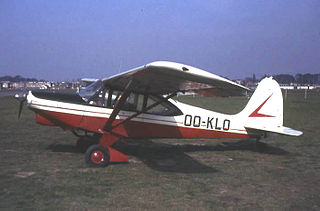
The Boisavia B.60 Mercurey was a series of four-seat light aircraft developed in France shortly after World War II.
The Boisavia B.260 Anjou was a four-seat twin-engine light aircraft developed in France in the 1950s. It was a low-wing cantilever monoplane of conventional configuration with retractable tricycle undercarriage. Intended by Boisavia as a touring aircraft, it did not find a market and only the single prototype was constructed. At this point, the firm sold the design to SIPA, which modified the design and re-engined it with Lycoming O-360 engines, but found that they could not sell it either. At a time when the twin-engine light plane market was already dominated by all-metal American aircraft, the Anjou's fabric-over-tube construction was something of an anachronism, and all development was soon ceased. Plans to develop a stretched version with three extra seats and Potez 4D engines were also abandoned.

The Jodel D.9 Bébé is a French single-seat ultralight monoplane designed by Jean Délémontez for amateur construction.
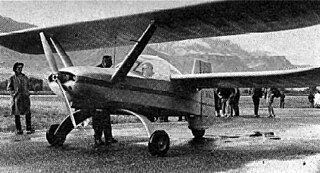
The Croses EC-6 Criquet ("Locust") is a 1960s French two-seat homebuilt aircraft designed by Emilien Croses.

The Robin HR100 is a French four-seat light monoplane, designed by Chris Heintz and built by Avions Pierre Robin as metal-winged version of the Robin DR253 Regent.
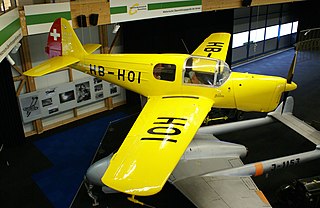
The Nord 1200 Norécrin is a French two or three-seat cabin monoplane designed and built by Nord Aviation.

The Nord 1100 Noralpha was a French-built and re-engined Messerschmitt Bf 108 produced by Nord Aviation.

The Wassmer WA-51 Pacific is a French four-seat cabin monoplane designed and built by Société Wassmer. Different-powered variants include the Wassmer WA-52 Europa and the Wassmer WA-54 Atlantic. It was the world's first composite material-built aircraft.

The Morane-Saulnier MS.570 was a civil utility aircraft produced in small numbers in France in the late 1940s.

The Wassmer WA-80 Piranha is a French two-seat low-wing cabin monoplane trainer designed and built by Société Wassmer. Based on the same construction as the company's WA-50 four-seater, the WA-80 was a scaled down version. The prototype, registered F-WVKR, first flew in November 1975 powered by a 100 hp Rolls-Royce Continental O-200 engine. Wassmer appointed a receiver and suspended production in 1977 after 25 had been built.

The SECAN SUC-10 Courlis was a French high-wing touring monoplane designed and built by Société d'Etudes et de Construction Aéronavales (SECAN), a branch of the automobile company Société des Usines Chaussons. The aircraft had problems with the engine installation and only 144 were built, some without engines and were scrapped.
The SNCAC Chardonneret were a short series of 1940s French three- and four-seat cabin monoplanes with the same wings and general layout but with different engines.
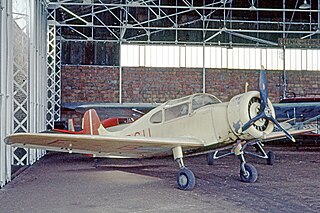
The Guerchais-Roche T.35 and T.39 was a small family of two, three and four seat French-built touring monoplanes of the 1940s.

The Ambrosini Rondone is an Italian-designed two/three-seat light touring monoplane of the early 1950s.

The Robin DR.200 is a family of French conventional landing gear single-engined light touring or training cabin monoplanes. Originally produced by Centre Est Aéronautique the company later changed its name to Avions Pierre Robin.
The Morane-Saulnier MS.560 was a French civil aerobatic monoplane designed and built by Morane-Saulnier.

The Uetz Pelikan is a Swiss four-seat cabin monoplane designed for amateur construction by Walter Uetz.
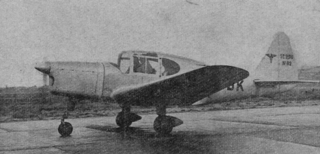
The Sud-Est SE-2300 or S.N.C.A.S.E. SE-2300 was a two/three seat low wing, single engine touring aircraft, built just after World War II in France. The SE-2310 was a tricycle undercarriage variant. Neither type went into production.
The SNCASO SO.3050 was designed and built in France towards the end of World War II. Only one was completed and that was soon abandoned.
The Caudron C.580 was a French advanced trainer aircraft intended to prepare pilots for the new low wing monoplane fighters of the mid-1930s. It did not go into production and only two were built.
References
- Gaillard, Pierre (1990). Les Avions Francais de 1944 à 1964. Paris: Éditions EPA. p. 40. ISBN 2-85120-350-9.
- Gaillard, Pierre (June 2000). "Boisavia: Les petites vendanges de Lucien Tielès". Le Fana de l'Aviation (in French). No. 367. pp. 32–41.
- Simpson, R. W. (1995). Airlife's General Aviation. Shrewsbury, UK: Airlife Publishing. ISBN 1-85310-577-5.